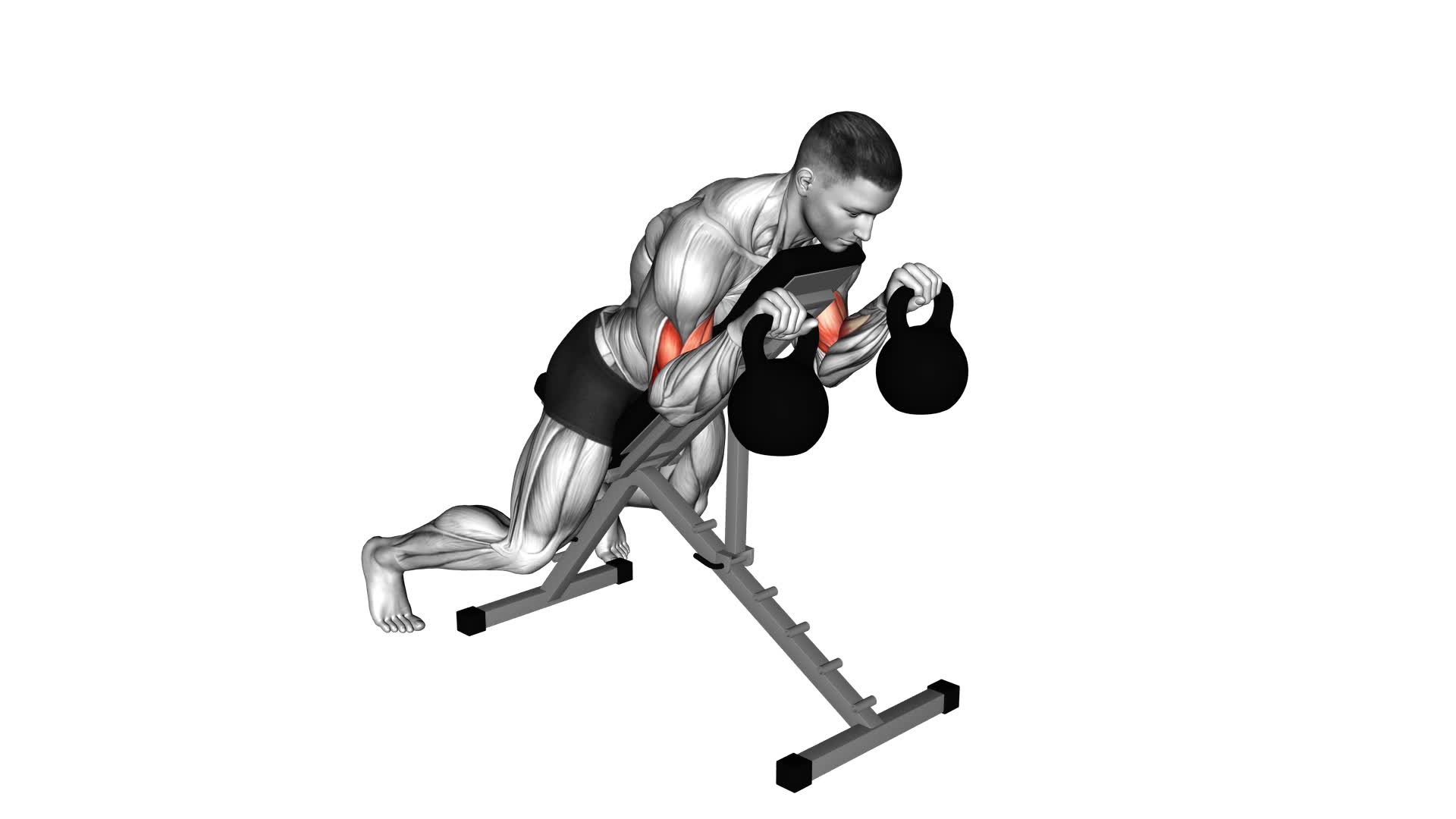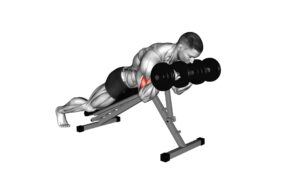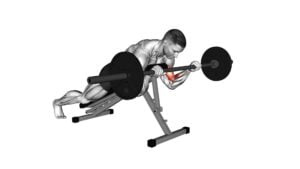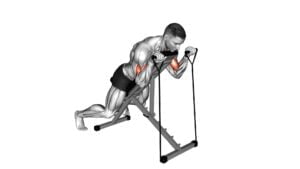Kettlebell Reverse Spider Curl – Video Exercise Guide & Tips

Looking to build your biceps and increase upper body strength? Then the kettlebell reverse spider curl is the exercise for you. In this video exercise guide, we'll show you the proper form and technique to maximize your results.
Watch This Exercise Video
You'll also learn about variations and progressions to keep challenging yourself. Avoid common mistakes and get tips for incorporating this effective exercise into your workout routine.
Ready to sculpt those arms? Let's get started!
Key Takeaways
- The Kettlebell Reverse Spider Curl targets the biceps brachii effectively.
- Engaging the brachialis muscle during this exercise helps in achieving balanced arm development.
- The exercise improves grip strength.
- Incorporating the Kettlebell Reverse Spider Curl into your routine enhances muscle definition and strength.
Benefits of the Kettlebell Reverse Spider Curl
Discover the numerous benefits of the Kettlebell Reverse Spider Curl. This exercise offers several advantages and effects that can enhance your workout routine.
One of the main advantages of the Kettlebell Reverse Spider Curl is its ability to target the biceps brachii muscle effectively. By holding the kettlebell with an underhand grip and curling it towards your shoulders, you engage the biceps in a unique way. This exercise helps to isolate and strengthen the biceps, leading to improved muscle definition and strength.
Another benefit is the engagement of the brachialis muscle, which lies underneath the biceps. The reverse grip used in this exercise puts a greater emphasis on the brachialis, helping to develop a well-rounded and balanced look in your arms.
In addition to targeting specific muscles, the Kettlebell Reverse Spider Curl also improves grip strength. The kettlebell's offset weight distribution challenges your forearm muscles, forcing them to work harder to stabilize the weight. This can lead to increased grip strength, which is beneficial for various daily activities and other exercises.
Proper Form and Technique for the Exercise
To perform the Kettlebell Reverse Spider Curl with proper form and technique, start by standing upright with a kettlebell in each hand. Keep your feet shoulder-width apart and your knees slightly bent. Engage your core and maintain a straight back throughout the exercise.
Begin by curling the kettlebells up towards your shoulders, ensuring that your elbows remain close to your sides and your palms face down. As you curl the weights, focus on contracting your biceps and squeezing them at the top of the movement. Remember to maintain control and avoid swinging or using momentum to lift the kettlebells.
Proper technique is crucial to getting the most out of the Kettlebell Reverse Spider Curl and avoiding common mistakes. One common mistake is using too heavy of a weight, which can compromise form and lead to injury. It's important to choose a weight that allows you to perform the exercise with proper technique and without straining your muscles.
Another mistake to avoid is allowing your elbows to drift forward or outward during the curl. Keep your elbows close to your sides throughout the movement to target your biceps effectively. Lastly, avoid using your back or shoulders to lift the weights. Focus on isolating your biceps and engaging them to perform the curl.
Variation and Progression of the Kettlebell Reverse Spider Curl
To further challenge yourself and continue making progress, you can incorporate variations and progressions into your Kettlebell Reverse Spider Curl routine. By doing so, you won't only prevent plateaus but also increase muscle activation through progressive overload.
Here are some variations and progressions to consider:
- Increase the weight of the kettlebell: Gradually increase the weight of the kettlebell to challenge your muscles and promote strength gains.
- Change the grip: Experiment with different grip variations, such as an overhand grip or an underhand grip, to target different muscles within the biceps.
- Introduce unilateral movements: Perform the exercise one arm at a time to improve muscle imbalances and increase overall stability.
- Incorporate tempo variations: Slow down the eccentric (lowering) phase of the exercise to increase time under tension and enhance muscle growth.
Common Mistakes to Avoid During the Exercise
You should always be cautious to avoid common mistakes while performing the Kettlebell Reverse Spider Curl exercise.
One of the most common mistakes is using too much weight. It's important to start with a weight that you can comfortably lift and control throughout the exercise. Using too much weight can lead to improper form and increase the risk of injury.
Another common mistake is swinging or using momentum to lift the kettlebell. This not only takes away from the effectiveness of the exercise but also puts unnecessary strain on your muscles and joints. To avoid this, focus on maintaining a slow and controlled movement, keeping your core engaged and your body stable.
Additionally, lifting the kettlebell too high or too low can also compromise proper form. The correct range of motion for the reverse spider curl is to bring the kettlebell up to shoulder level, keeping your elbows tucked in close to your sides.
Tips for Incorporating the Kettlebell Reverse Spider Curl Into Your Workout Routine
To effectively incorporate the Kettlebell Reverse Spider Curl into your workout routine, focus on maintaining proper form and gradually increasing the weight as your strength improves. Here are some tips to help you make the most out of this exercise:
- Start with a lighter kettlebell: If you're new to incorporating kettlebells into your routine, it's important to begin with a weight that challenges you without sacrificing form. Starting with a lighter kettlebell will allow you to focus on mastering the movement before increasing the weight.
- Engage your core: During the Kettlebell Reverse Spider Curl, it's crucial to engage your core muscles to maintain stability and prevent any excessive swinging or momentum. This will help you isolate your arm muscles and maximize the effectiveness of the exercise.
- Control the movement: Slow and controlled movements are key to building arm strength with the Kettlebell Reverse Spider Curl. Avoid using momentum to lift the kettlebell and instead focus on squeezing your bicep muscles throughout the entire range of motion.
- Listen to your body: Pay attention to how your body feels during the exercise. If you experience any pain or discomfort, it's important to modify the movement or consult with a fitness professional to ensure you're performing the exercise correctly and safely.
Frequently Asked Questions
How Many Sets and Reps Should I Do for the Kettlebell Reverse Spider Curl?
For the kettlebell reverse spider curl, it's important to find the right balance between sets and reps. Start with 3 sets of 10 reps and gradually increase the weight as you become more comfortable with the exercise.
This exercise targets your biceps and forearms, helping to build strength and definition. Remember to avoid common mistakes such as swinging the kettlebell or using momentum to lift the weight.
Focus on proper form and control to maximize the benefits.
Can the Kettlebell Reverse Spider Curl Help With Building Bicep Strength?
Yes, the kettlebell reverse spider curl can help build bicep strength. This exercise specifically targets your biceps by isolating and engaging them throughout the movement. By holding the kettlebell in a reverse grip and curling it towards your shoulder, you're effectively working those muscles.
This exercise also offers other benefits such as improved grip strength and forearm development. There are variations you can try to further challenge your biceps and add variety to your routine.
Is It Necessary to Use a Kettlebell for the Reverse Spider Curl, or Can I Use Dumbbells Instead?
Using dumbbells as an alternative for the reverse spider curl is definitely an option. While the kettlebell is commonly used for this exercise, dumbbells can provide a similar level of bicep activation.
Incorporating the reverse spider curl into your full body workout routine can bring numerous benefits. It targets the biceps, helping to build strength and size. Additionally, it engages the forearms and stabilizer muscles, promoting overall upper body strength and balance.
Are There Any Modifications or Alternatives for Individuals With Wrist or Shoulder Issues?
If you have wrist or shoulder issues, there are modifications and alternatives you can try for the reverse spider curl.
It's important to prioritize your safety and comfort during workouts.
For wrist issues, you can use wrist wraps or perform the exercise with lighter weights.
For shoulder issues, you can try using resistance bands instead of kettlebells.
How Often Should I Include the Kettlebell Reverse Spider Curl in My Workout Routine for Optimal Results?
For optimal results, consider incorporating the kettlebell reverse spider curl into your workout routine. Its frequency will depend on your fitness goals and overall program.
Adding this exercise a few times a week can help target your biceps and forearms, promoting muscle growth and strength.
Additionally, varying the exercises in your routine can provide added benefits, as it challenges your muscles in different ways, preventing plateau and promoting overall muscle development.
Conclusion
Incorporating the kettlebell reverse spider curl into your workout routine can provide numerous benefits. This exercise specifically targets the biceps and forearms, helping to build strength and definition in these areas. To ensure you get the most out of this exercise, it's important to follow proper form and technique. This includes maintaining a stable and neutral spine, engaging the core, and keeping the shoulders down and back. It's also important to avoid common mistakes, such as using momentum to lift the kettlebell or rounding the shoulders. Gradually progressing to more challenging variations, such as increasing the weight or incorporating different grips, can also help to continue challenging your muscles and stimulating growth. By keeping these tips in mind, you can effectively incorporate the kettlebell reverse spider curl into your routine and work towards achieving your fitness goals.

Author
Years ago, the spark of my life’s passion ignited in my mind the moment I stepped into the local gym for the first time. The inaugural bead of perspiration, the initial endeavor, the very first surge of endorphins, and a sense of pride that washed over me post-workout marked the beginning of my deep-seated interest in strength sports, fitness, and sports nutrition. This very curiosity blossomed rapidly into a profound fascination, propelling me to earn a Master’s degree in Physical Education from the Academy of Physical Education in Krakow, followed by a Sports Manager diploma from the Jagiellonian University. My journey of growth led me to gain more specialized qualifications, such as being a certified personal trainer with a focus on sports dietetics, a lifeguard, and an instructor for wellness and corrective gymnastics. Theoretical knowledge paired seamlessly with practical experience, reinforcing my belief that the transformation of individuals under my guidance was also a reflection of my personal growth. This belief holds true even today. Each day, I strive to push the boundaries and explore new realms. These realms gently elevate me to greater heights. The unique combination of passion for my field and the continuous quest for growth fuels my drive to break new ground.







